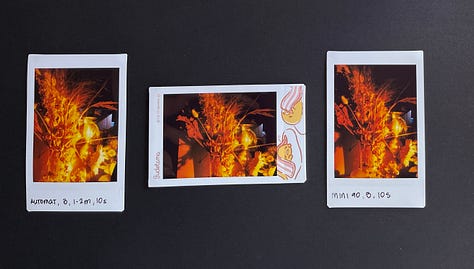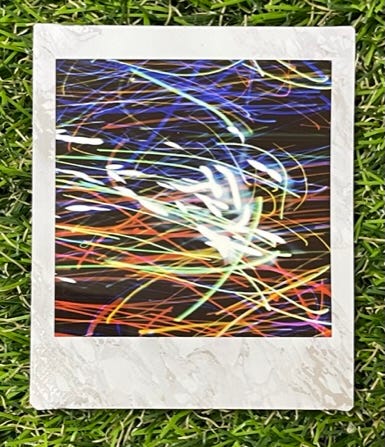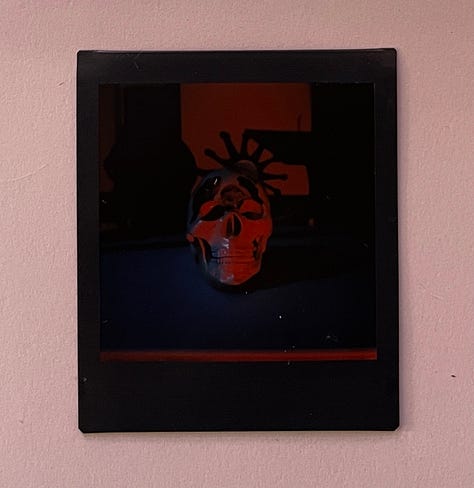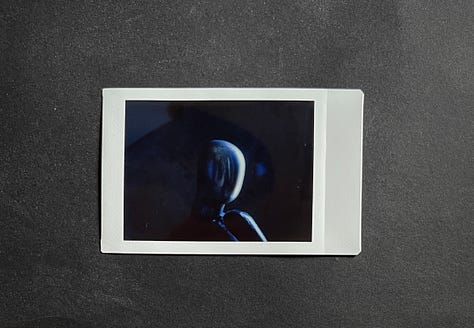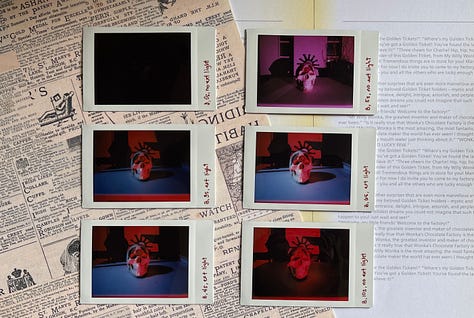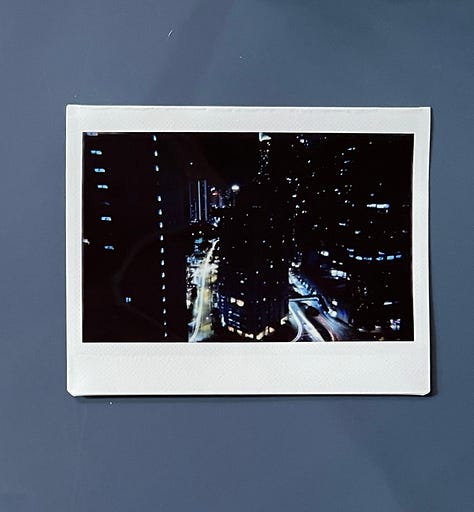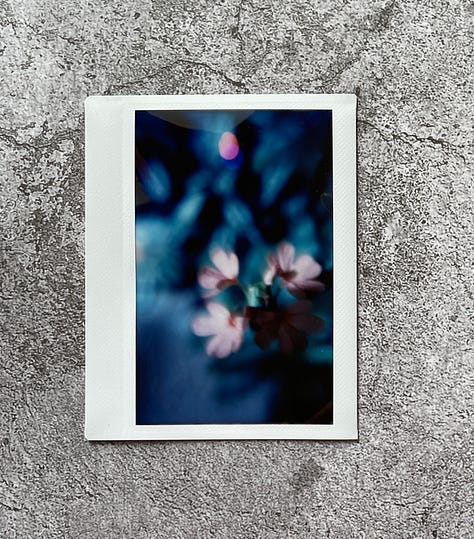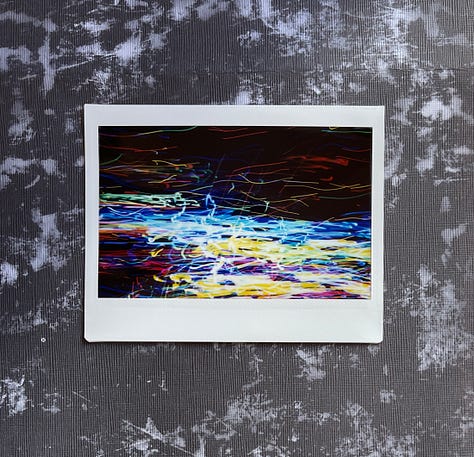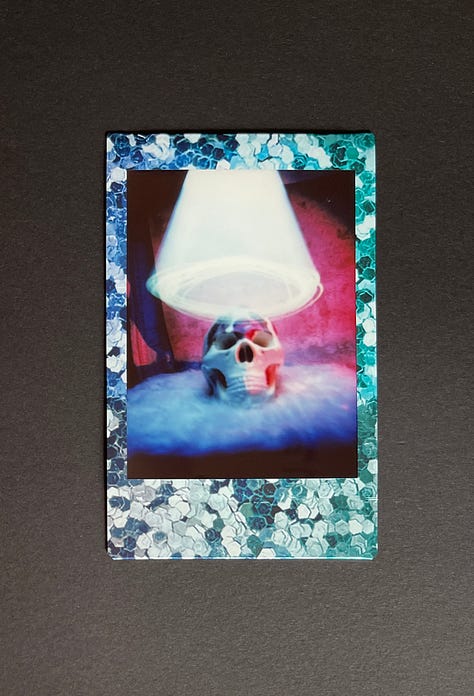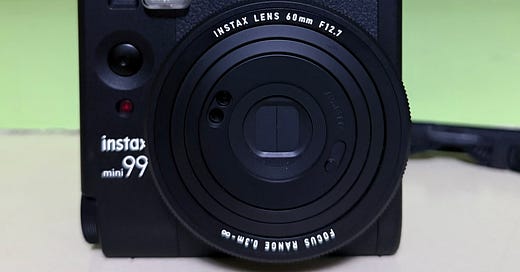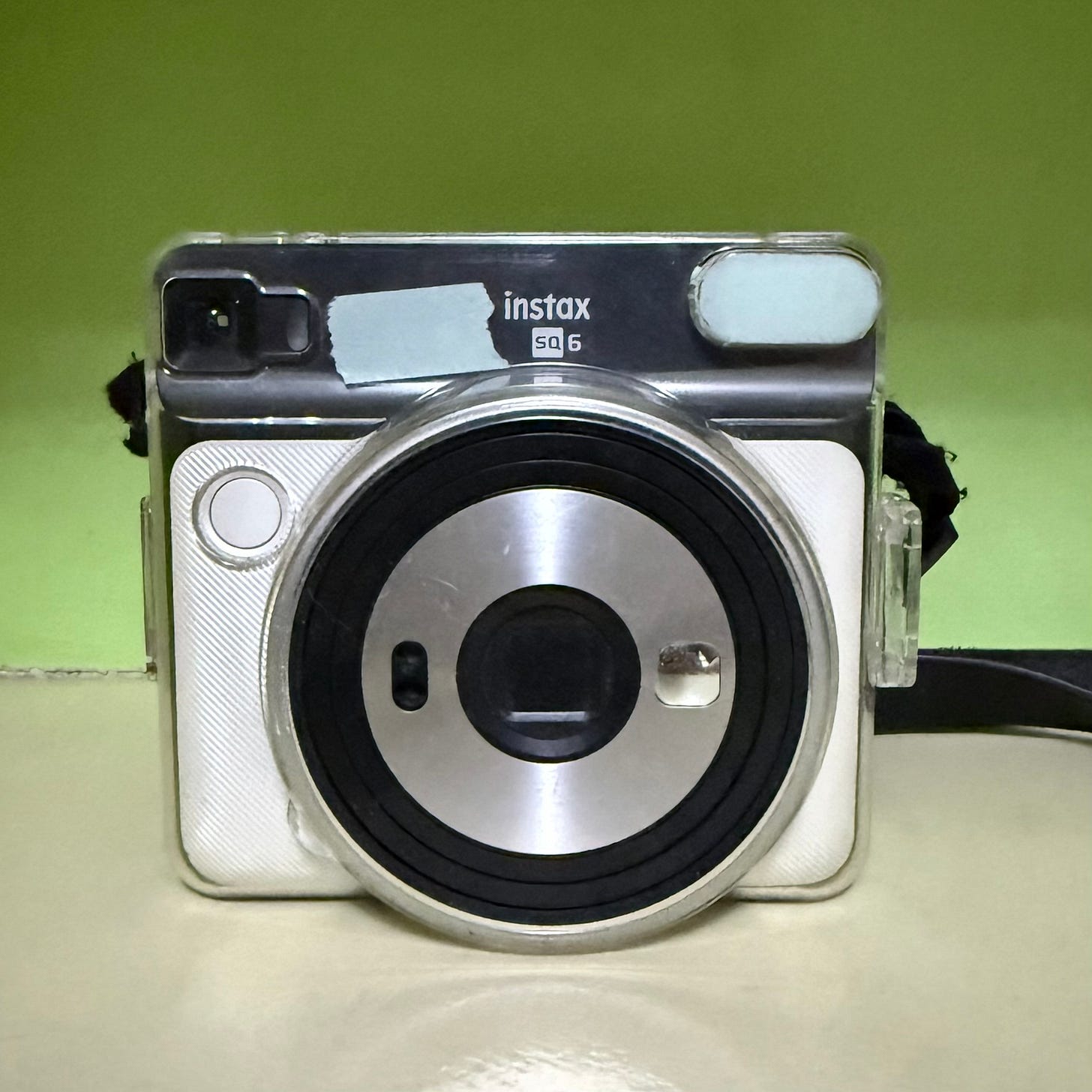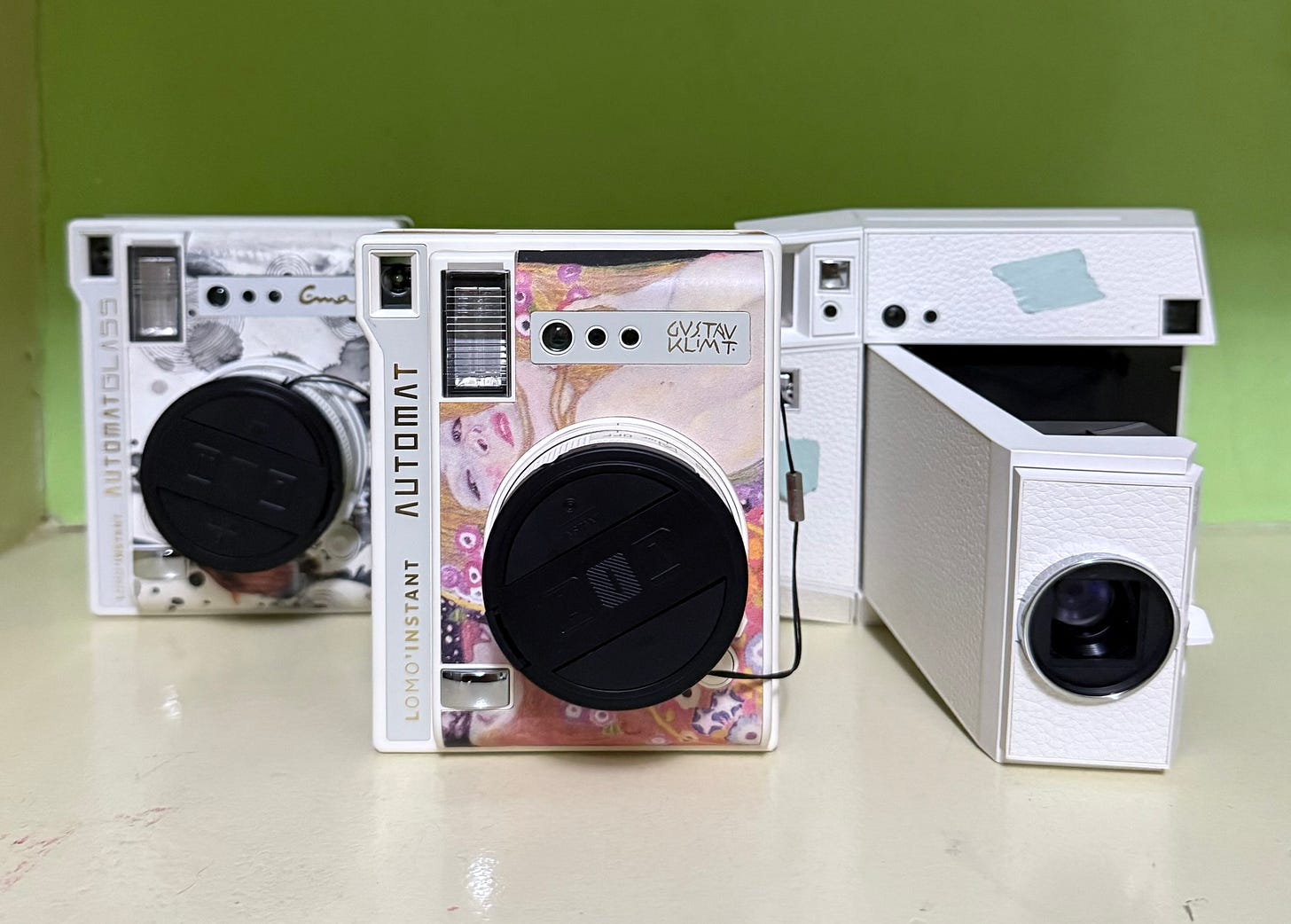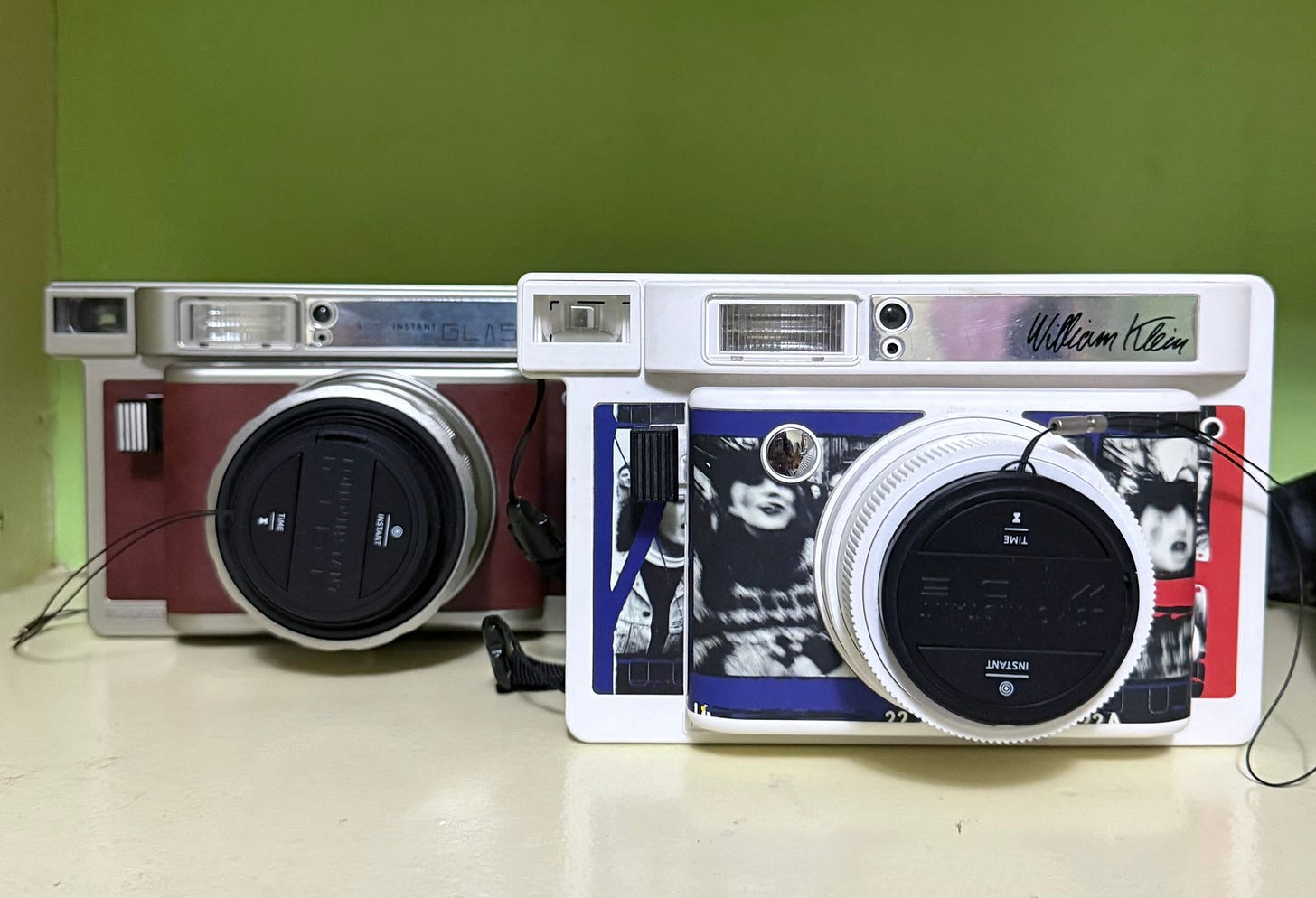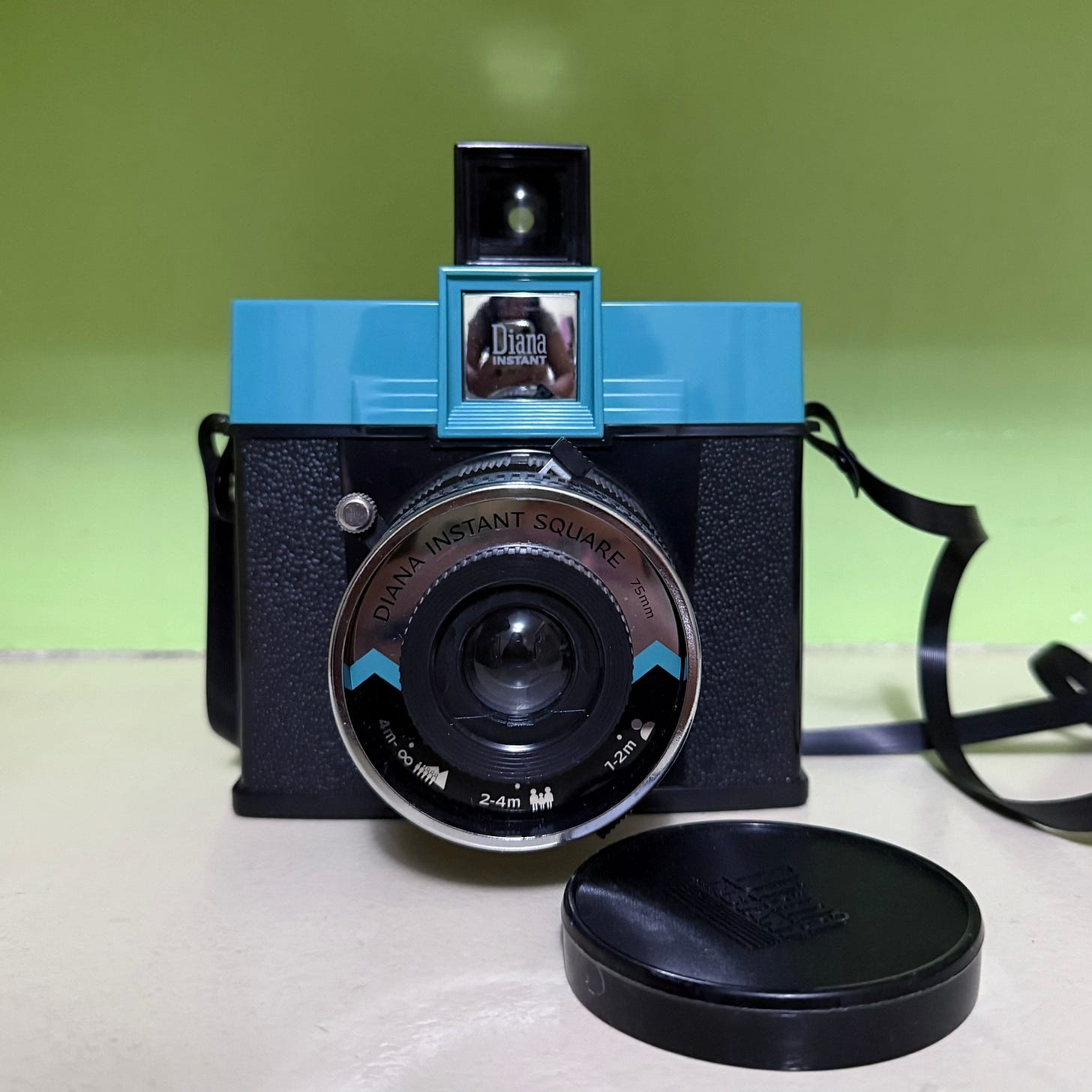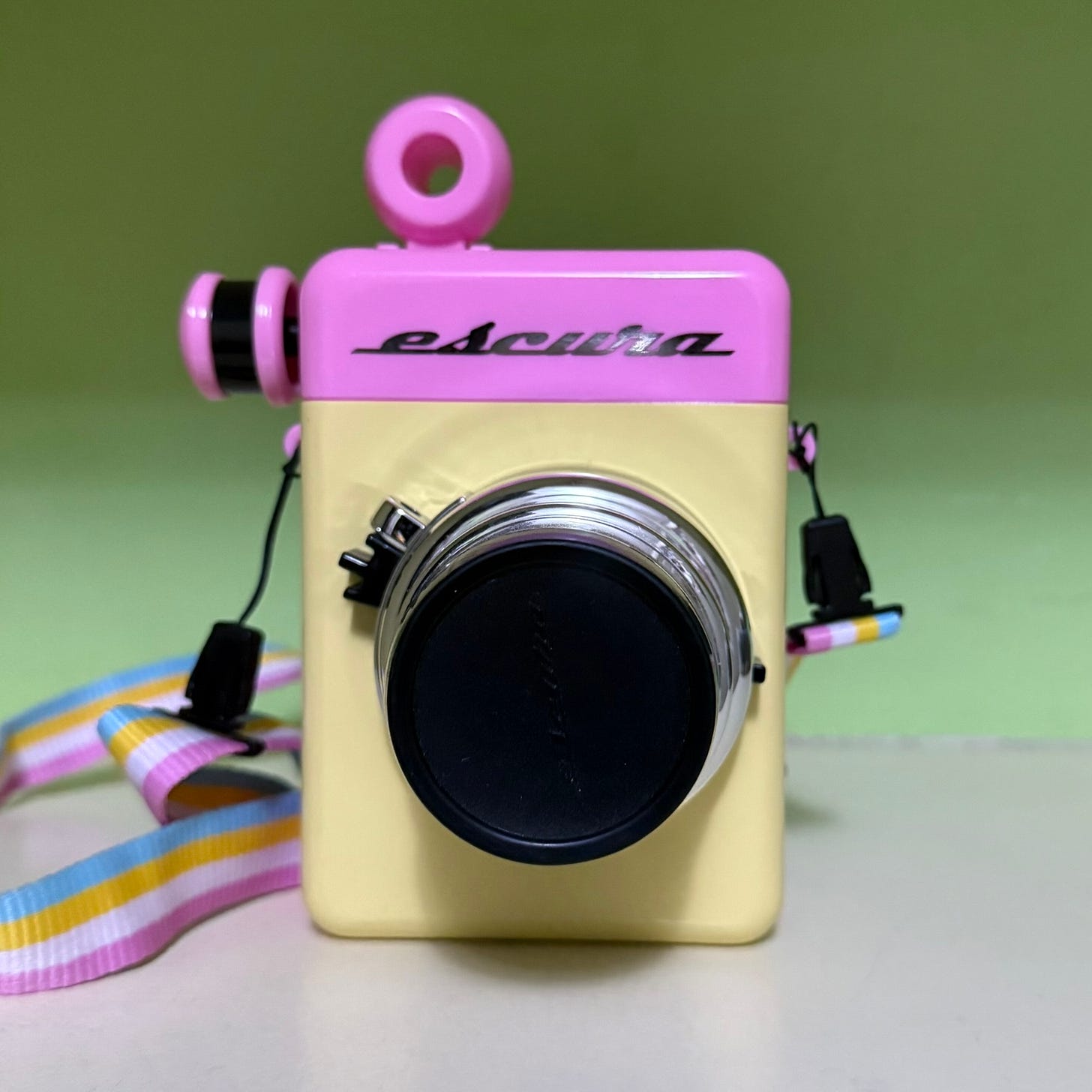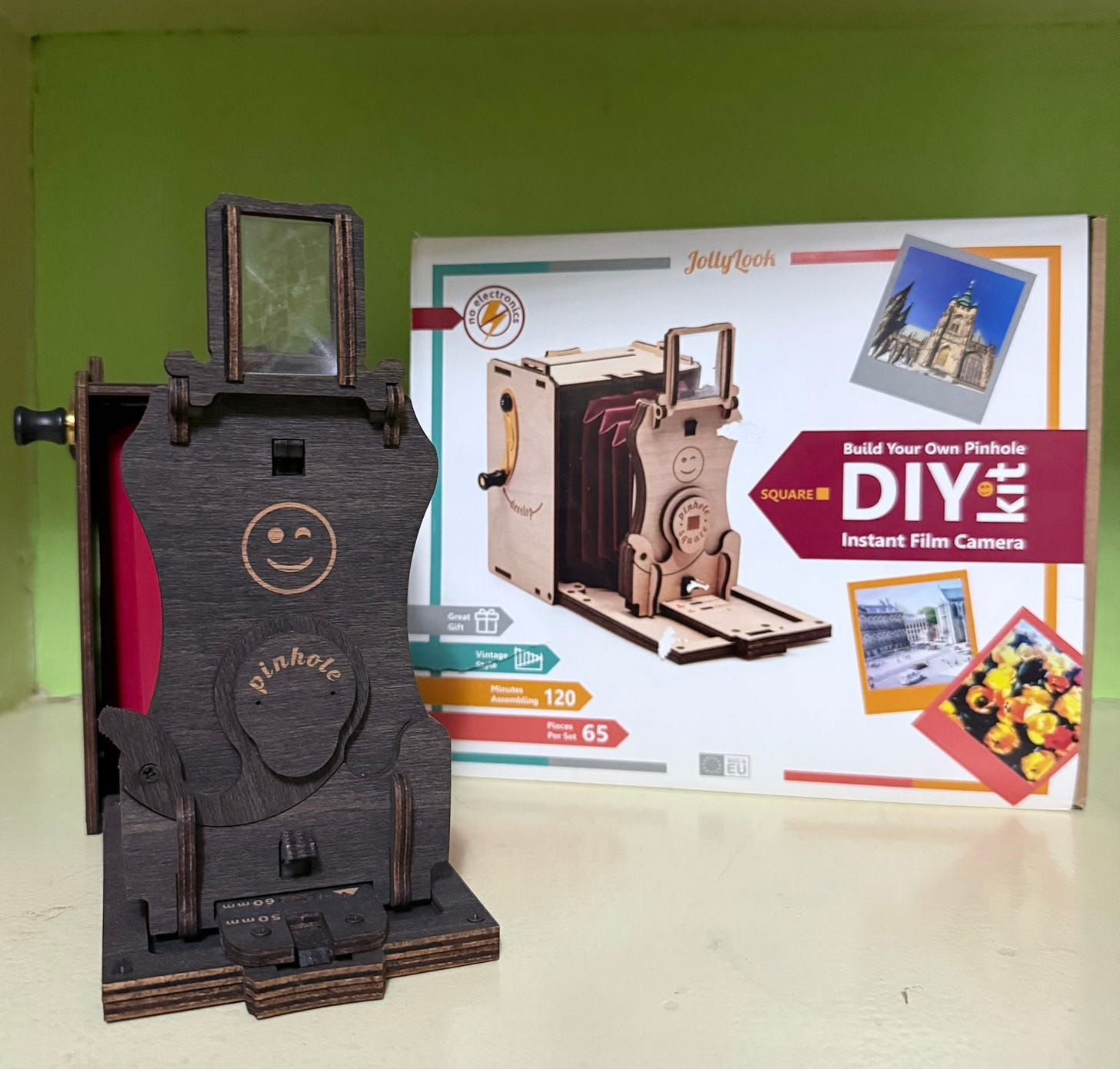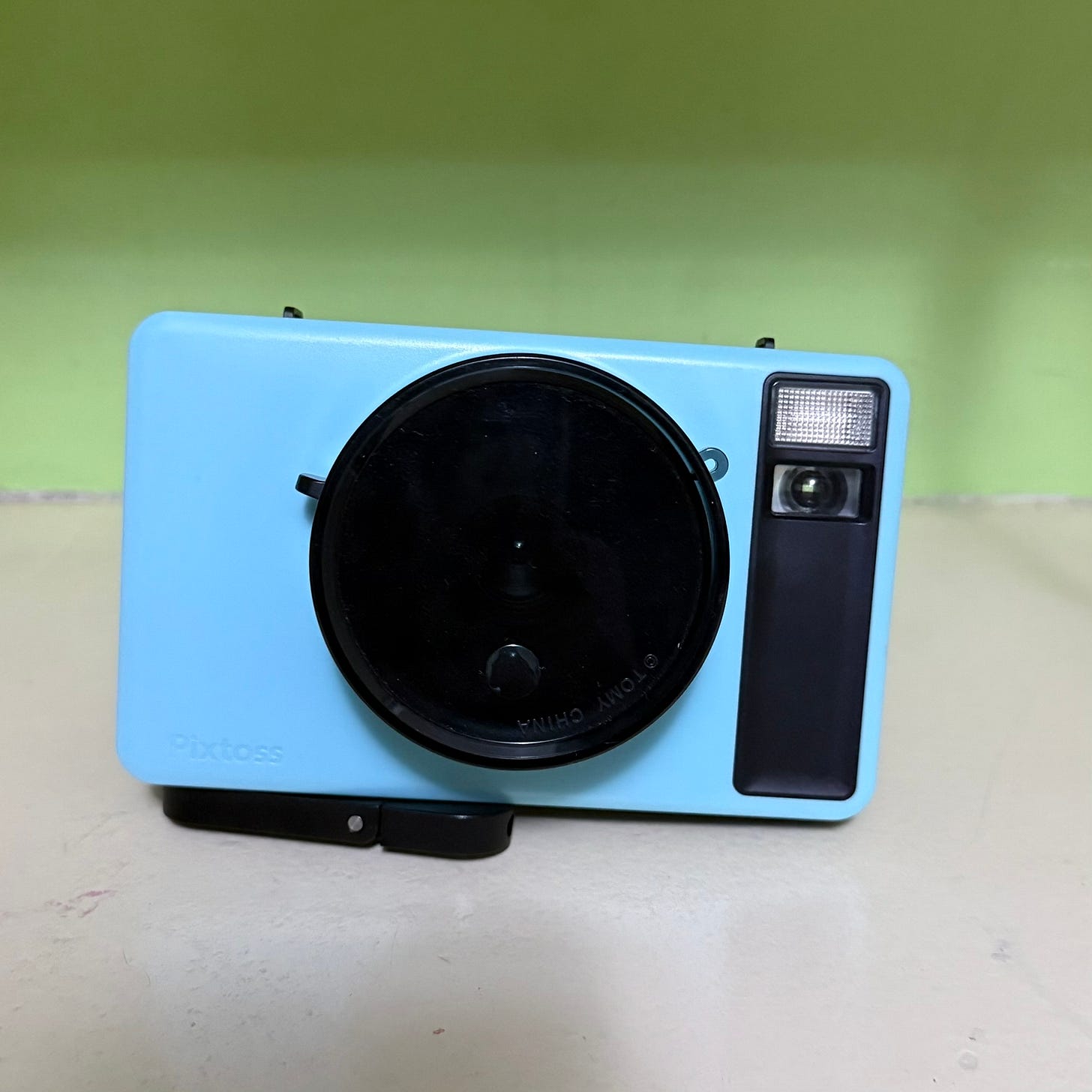On Low Light and Long Exposures
There are only about a handful (figuratively) of instant cameras that can function well in low light conditions and almost all of them are non-Fuji Instax brands. So, let's talk about them.
In this guide, I will:
Only focus on the analog cameras. This means no hybrids.
Write about the cameras that I actually own with the capability for slow shutter speeds or bulb mode.
Not be technical about it, as always. All specifications mentioned are from the cameras' manuals that I looked up online because I don't read manuals.
Show you in a gallery below the different low light and long exposure shots I’ve done before.
So why write about this at all?
Personally, I hate using flash unless it’s for something deliberate like using gels to color-wash a shot. I used to not take photos of people except my grandma, and I always encourage her to do outdoor shots in daylight. Photos of other people used to be rare because it just wasn't my strong suit. The ability to take indoor shots without a flash became important because of my experiments with long exposure especially when I wanted to play with Christmas lights. I used to not use light meters so getting the correct timing for my photos took a lot of testing (and a lot of film packs) but now I use the Lux app.
Instax film is ISO 800 so light meters are easy to setup since it's standard. The timing would only vary on the shutter speed of the cameras and their capability to use bulb mode. Note that the shutter speed will not matter if you're using bulb mode.
What is bulb (B) mode?
A simple explanation is that it's a setting that lets you keep your camera's shutter open for as long as you hold the shutter button. As I mentioned above, not all cameras have this functionality and even when they do, the amount of time you're able to use it is limited. In B mode, the camera's flash (if there is one) is automatically disabled.
It is highly recommended that you use a tripod or a flat, stable surface when you're in this mode. Why? Because any slight movement will cause your photo to become blurry. Unless this is what you're trying to achieve or you have super stable hands and arms, use a tripod!!
Without further ado, let's get to the cameras.
Instax Mini 99
Shutter speed: 1.8 to 1/400s
The Instax Mini 99 does well in low light settings if 1) your subject is about a meter away at most and 2) there's ample lighting either from the flash or an external light source. Generally the optimal range for the flash is up to 2-3 meters only but you'll get a highly darkened outline of your subject. To counter this, you can raise the exposure to +1 or +2 to even out the light and the dark.
It also has a bulb mode that you can set up using the Mode button. It will show up as "B" on the tiny screen. Photos come out quite sharp and it's especially good for light trails on moderately bright environments, such as within the confines of a brightly lit city. Why, you ask? It's because you can only use the bulb mode for a whopping 10 seconds. If you're wanting to take photos of a lone street lamp on a dark street, forget about it. All you'll get is a black photo.
Instax SQ6
Shutter speed: 1.6 - 1/400s
The Instax SQ6 doesn’t have bulb mode but it does fairly well in low light conditions in its Auto mode. The camera adjusts the shutter speed accordingly for subjects with ample lighting and can capture the image without fuss. It is recommended to use a tripod or a stable surface when doing this because the shutter really takes a long time to close, and you shouldn’t move the camera until the ejection has started.
Lomo'Instant
Shutter speed: 1/125s
In all honesty, this is the one instant camera I have that I didn't use after the initial testing. I just don't like it, not after I had the Automat as my 3rd analog camera. Since the shutter speed is fixed, it gives really dark to plain black photos if you're indoors or in a dimly lit area and you aren't using its flash. You can counter it a bit by overexposing your photos (by setting the exposure to +1 or +2) but it still wouldn't give you any output that other cameras couldn't do better.
It's bulb mode, which can be set using the switch on the camera's side, allows for 30s of exposure time max. Make sure you switch the flash off for this, though I haven't really tried to force the flash on B mode - I just feel it's going to be a waste of film to test this setting combination out.
Lomo'Instant Automat/Lomo'Instant Automat Glass/Lomo'Instant Wide/Lomo'Instant Wide Glass/Lomo'Instant Square
Shutter speed: 8 to 1/250s, 1/30s option for the Wide
Regardless if you're using the normal or the glass version, the shutter speed of the Lomo'Instant Automat and Wide is standard for the cameras (and there's only one version for the Square). In low light on auto (A) mode, the camera takes decent photos as the shutter speed slows down accordingly. As I wrote above, just make sure you're using a tripod or a stable surface for this and you aren't too far from your subject. I found this function really useful when I did my portrait session with my staff when I still in Lomography last year along with my Junkyard Flora set. The vignetting of the Lomo camera output plus the normal darkening of the area surrounding the highlighted subject makes for dramatic photos.
The Lomo cameras excel in the long exposure area though. By switching to bulb (B) mode - for the Automat and Square, press the button marked as A/B and for the Wide, just turn the switch until it's pointed to B - you have a 30s max long exposure shot. BUT! If you want a longer exposure, use the multiple exposure switch/button (MX) before you take your first shot on B mode and you get unlimited 30s exposures on one photo!! Turn off the MX when you're done to eject the film.
Okay, well, it's probably *not* unlimited. The most I've done is 5, which was 2.5 minutes, to test but the photo already was too overexposed by that point and it pretty much was just white. I guess it was my subject too, but I've forgotten what it was, so there's that. Also, since I usually use the B mode + MX combo on subject that are between 0.6m to 2m away, four 30s exposures are enough to get the results that I want. Since I also mentioned that I use Christmas lights as subjects for long exposure, 10s-30s is enough for light sources that are within 2m away from me.
I should also probably mention that the remote shutter buttons on the lens cap will also work on B mode, so at least that removes any movement that you may get if you manually hold the shutter button to take a shot. This is extremely useful if you have shaky hands like mine!
Diana Instant Square
Shutter speed: 1/100
Do not attempt to use this camera in low light, especially indoors, without flash in its normal mode. I guarantee that you'll just keep wasting films if you do this. There's only one speed at which its shutter operates, and you can't do anything about it.
However, it's bulb mode is truly unlimited. You don't even need to use multiple exposure to get long exposure time. Set the camera to "B" - you can find the switch on the lens marked with N/B - and just hold the shutter open for as long as you need. The Diana Instant Square comes with a nifty accessory that you can string to your camera: a stopper. It's an L-shaped plastic thing (or a small "H") that you insert into the slit on the shutter button/switch/arm(??) when it's all the way down to keep it hands free. Also does a lot to prevent any shaking and avoiding blurry shots!
I tried to see if I can capture the moon when I was first testing the camera. I left the shutter open for about 10 minutes but obviously that wasn't enough otherwise I'd be showing you all the output.
Leica Sofort
Shutter speed: 1.8 - 1/400s
Let's just put this out there: the Leica Sofort is almost the exact replica of the Mini 90 in a boxier design. I'll just spare everyone any lengthy explanation, but it does okay on low light, flash off scenarios as long as you're close enough to the subject.
Its bulb mode can be accessed through the modes, and it will show up as "B" on the screen. Like the Instax models, you're only given 10s maximum for a long exposure shot.
Escura Instant 60s
Shutter speed: 1/100s
Don't use the Instant 60s in low light settings or indoors because you just won't get anything unless you use the bulb mode. Set the camera to long exposure mode by switching the exposure to be set to the light bulb icon at the bottom of the lens barrel. I found that switching the mode (aperture) to the cloudy icon also helps in shortening the amount of time needed to keep the lens open.
By the way, they do sell an external flash made specifically for the Instant 60s so you can shoot indoors or at night.
Jollylook Pinhole Mini/Jollylook Pinhole Square
Shutter speed: N/A
This DIY camera features a pinhole instead of a lens. The shutter is magnetic, so you can leave it open and snap it close once you're done without having to hold it the whole time. The camera features an exposure calculator dial at the back of the camera so you can determine how much time you need to keep the shutter open. Once you're done, crank the lever to eject the film.
I've only really tried the Mini because I haven't had the time to build the Square but it worked as well as expected and the calculator gave me correct exposure times. I haven't tried doing it *correctly* at night because the two times I tried, I used a lone Christmas light as a subject and left the shutter open for 18 minutes and still nothing. Maybe I'll try again after I build the Square.
Takara Tomy Pixtoss
Shutter speed: 1/80s
The Pixtoss doesn't really have any bulb mode. I included it here because theoretically, it's possible to do long exposures BUT it's quite troublesome. Why? Because you need to keep pressing the lever as many times as needed for multiple exposures until you *think* your subject is exposed enough.
And that's that!
I hope this is the slightest bit helpful if you're wanting to try bulb mode or low light instant photography. A few other things that I want to bring up:
Majority of the Instax instant cameras generally can function in low light to some extent. However, most of them do not have the capability to disable flash and you’ll have to manually cover the flash if you don’t want it. Hence, I did not include them here anymore.
The correct focal zone is still important because you'd still get blurry shots if your focus is incorrect.
When light painting using flashlights, you can set the focus to infinity, meaning you're at least 3m away from your camera and just light paint away!
If you're unsure of your settings including the amount of time you need to keep the shutter open with the amount of light you have, you can setup a static subject and do test shots. Write the settings on the film so you'll have a guide.
Have fun with long exposure! There are so many things you can do with it, and you're definitely not limited to light streaks, fireworks, or light painting!
Let me know what your experience is with long exposure or low light shooting! I’m always on the lookout for new things to try!
